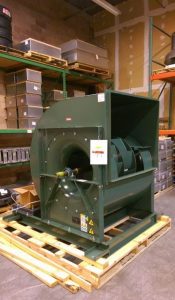
If you own or run an industrial plant, it’s likely your building is reliant on the use of centrifugal fans. Industrial fans are key to day-to-day operations for businesses in wide range of industries. Nevertheless, you may not know the ins and outs of the parts that make a centrifugal fan function. Here is a brief overview of one of the most important parts of the industrial fan, the motor.
Heat and High Temperatures Could Affect Your Fan’s Motor
Some industrial plants need to perform operations in harsh, hot environments, and if you fall in that camp, you may worry about high temperatures adversely affecting your centrifugal fans’ motors. As such, it’s important that you have the right insulation class motor, and that it’s properly wired to ensure it doesn’t ware out from high temperatures, shortening its lifespan in the process.
You Should Try to Avoid Starting It And Shutting It Down All the Time
Unless it’s a motor specially designed for frequent starts and stops, turning turning the motor of your industrial fan on and off rapidly and consistently, it could potentially shorten its window of use, forcing you to have to replace the motor earlier than you anticipated.
The Motor’s Location Is Determined By Different Variables
The motor is a centrifugal fan is based on the drive side of the fan, and the exact needs of your industrial business. It’s essential to place the motor in the right position to ensure you’re getting the most out of your centrifugal fans and that they’re working as efficiently as possible for your building.
Whether you need the motor on your centrifugal fan repaired or need a new one installed, the experts at Dynamic Fan are here to help. Contact us for more information.
